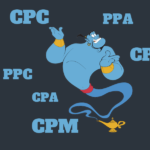
Headline
- It should be catching!
- It should call to the human needs, maybe even fears or sense of guilt!
Don’t feel like a bad guy! You’re not the first and you won’t be the last! That’s what everybody in marketing does!
“Cannot schedule the time for attending fitness? Buy our treadmill and train at home!”
“Always on a rush? Don’t have a time to eat normally? Buy our yogurt!”
- It should inform
- It should show the problem, that the customer will overcome
Subheading
Just develop the idea, you gave in the heading. It should be persuasive. Traditionally it goes right underneath the main headline.
Images
There is a phenomenon, called Picture Superiority Effect. Allan Paivio’s dual-coding theory is a basis of picture superiority effect – the idea is that images are perceived in times faster than text and remembered longer. They send your brain a symbolic signal! You can use images that call upon the most sensitive aspects of human nature – family, children, health, happiness, sense of security, etc. It means, that it’s not necessarily to use just those pictures, that are showing your product or service directly. You can influence the subliminal sources of your audience by adding the image, that illustrates the feeling you want to invoke.
It a good idea to combine different types of images on your landing page. You can use the main picture as emotional message – in a background of your heading. And also implement different visual diagrams, screenshots and tables to be more convincing and clear. If you are launching the new product you should have good demonstrative images showing your product on all sides. You can use zoom functionality or create stunning 360 degree spins and full 3D product visualization!
If you are introducing the new software or tool – you should show some screenshots of the users interface, dashboard, admin panel, etc. Use only good quality images. If you are showing the details – please make sure they are clearly visible, it’s very annoying if the picture shows details you suppose to see, but you just can’t do that, or have to make different efforts (i.e. save the image and then use zoom on your builtin picture viewer).
Icons and symbols
Never use the icons that are not 100% associated with one and the same meaning! The same thing – if you created your own icons – then test them first with the focus group. If you find out that some of them may be interpreted in different ways – don’t use them, or at least give the text explanation right below them.
It’s a good idea to use bulleted or numbered lists – when you are talking about features or advantages.



0 Comments